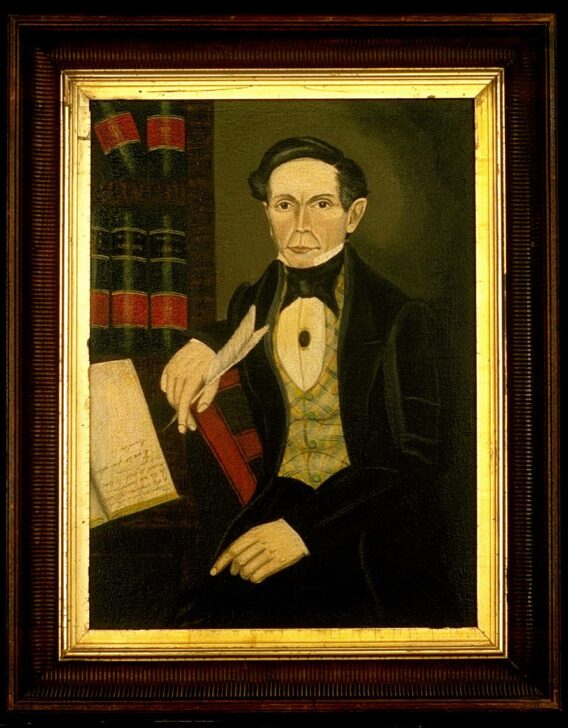Portrait of a Man Holding a Quill Pen
Erastus Salisbury Field

Description
Erastus Salisbury Field
United States, 1805–1900
Portrait of a Man Holding a Quill Pen
circa 1830
Oil on canvas
Gift of the Daniel and Harriet Fusfeld Folk Art Collection, 2002/1.182
Showing talent at a young age, Erastus Salisbury Field trained with painter Samuel F. B. Morse (the subsequent inventor of the telegraph). The premature death of Morse’s wife ended Field’s brief apprenticeship, and Field spent his career painting community members in the small towns in Connecticut, Massachusetts, and Michigan, where he resided. In the last decades of his career, when photography began to overshadow portrait painting, Field also took a turn at daguerrotypes.
Portrait of a Man Holding a Quill Pen follows a common formula for male portraits of the early nineteenth century that was a particular favorite of Field’s. The suited male sitter was painted with a book or quill in hand, sometimes with additional texts on tables or nearby shelves. Such objects symbolized the sitter’s literacy, education, and penmanship—all marks of a gentleman in the young republic.
(Out of the Ordinary, 2010)
Best known for his portraits of Illinois residents, Peck was born in Vermont. He produced work in Vermont, New York, and Illinois. Peck’s color palette changed from dark colors to light colors throughout his long career, but his figures always appear to be stiff and motionless.
Peck usually made half-length portraits that employed such facial features as a broad brow line and an intense stare. Like British portraiture, this work illustrates the subject’s social status as well as his physical likeness. The bookcase in the background combined with the paper at the sitter’s right hand signifies that the subject was an educated man.
Even though Sheldon Peck produced numerous portraits throughout his career, he never signed his works and never advertised himself as a portrait painter. Instead, he always advertised himself as a decorative painter for embellishing furniture.
Lindsay Meehan
Modern and Contemporary Art Intern
2002
Usage Rights:
If you are interested in using an image for a publication, please visit https://umma.umich.edu/request-image/ for more information and to fill out the online Image Rights and Reproductions Request Form.